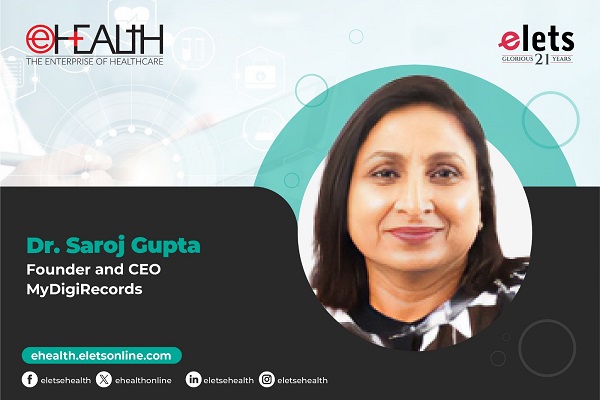One of the leading players in medical technology, BPL Healthcare has a significantly long presence in the cardiovascular devices segment as the first product launched by the company in 1969 was a single channel electrocardiograph.
In an interview with eHEALTH, Vijay Simha, COO and VP, BPL Healthcare, shares his perspective about the latest technologies and applications of external cardiac defibrillators.
Managing Sudden Cardiac Death
Sudden cardiac death is a prent and significant health problem even in developed countries. Sudden cardiac death (SCD) is defined as death due to cardiac causes, in which the time and mode of death is unexpected, in a person with or without pre-existing cardiac diseases and occurs within 1 hour of the onset of the symptoms. The definition is interpreted within combination of the various definitions of sudden cardiac death, which vary within the clinical, scientific and medico-legal context.
While the number of sudden cardiac deaths have been well documented in certain parts of the world; in India accurately and well collated information on sudden cardiac death do not exist. Estimates in the US put over 300,000 lives claimed by sudden cardiac death, annually.
sudden cardiac death is mainly caused by a lethal form of cardiac arrhythmia known as ventricular fibrillation (VF) and has been characterized by a rapid, disorganized and asynchronized contraction of the ventricular muscle which compromises the circulation of blood in the body leading to organ failure causing death within minutes. Terminating Ventricular Fibrillation using a powerful electric shock and maintaining the flow of blood from the heart through manual heart massage has proved beneficial in bringing many people back to normal life.
Across the world, the awareness of giving prompt medical attention and conducting Cardio Pulmonary Resuscitation with an Automated Defibrillator has become a well established practice with paramedical, security and lay persons being trained to perform basic emergency CPR thus potentially having created an environment for saving an individual afficted by Sudden Cardiac Death.
The Technology of Defibrillators
Defibrillators deliver a controlled and powerful enough electric shock to the heart so as to immobilize the heart muscle by depolarizing it. A number of hypothesis in the electrophysiology of ventricular fibrillation have been put since 1914 and current research has also rejected the so called “electrical paralysis hypothesis” proposed by Dudel (1968), where very strong shocks that were recommended were seen to cause extensive electroporation (rupture of the heart muscle cells) and permanent damage to heart tissue. Current thinking requires the depolarization of a “critical mass” in order to get the best outcomes (effective cardioversion, in this case) and various forms of electrical waveforms and critical parameter settings such as current density and energy settings have been the focus of research into defibrillator design.
Important findings reported strongly indicate the preference of a biphasic waveform with a controlled current density being applied. In externally used defibrillators this is achieved by assessing the victims impedence across the chest electrodes and delivering a predefined current vs time profile.
The Battle of Waveforms
Biphasic waveforms have been the subject matter of a number of outcome research. Currently divided into 2 schools of thought – the free discharge biphasically switched waveform also called the Truncated Exponential Biphasic Waveform versus the controlled current waveform also called rectilinear biphasic waveform. Patient impedence adjustments were present implicitly in a constant current source; the truncated exponential biphasic waveform needed special current sensing in order to control the discharge. The American Heart Association recommends a maximum energy of 200 J for biphasic external defibrillators and 360J for monophasic external defibrillators.
Out of Hospital Use of Defibrillators
Automatic External Defibrillators (AED) and Public Access Defibrillators (PAD) are being widely recommended by various health authorities and public organizations to improve overall survivability of individuals suffering from sudden cardiac death. This requires adequately aware and trained public service personnel, and “Good Samaritans” to act within the first 10-18 minutes of the occurrence of sudden cardiac arrest where chances for successful cardioversion is high. Afterwhich, the chances for cardioversion begins to drop very rapidly.
 Designed and manufactured by BPL, this public access defibrillator is advanced-yet-easy to use, by any Good Samaritan. In order to be used by common public, this product features some relevant features such as Audio & Visual prompts in localized languages (Hindi/English), self-test protocols for “always-ready” usage, The constant current bi-phasic waveform technology is used in the Phoenix to minimize cardiac tissue damage and provide better outcomes. Past-event history review, Light weight & Long battery life make this product suitable for locating in public places.
Designed and manufactured by BPL, this public access defibrillator is advanced-yet-easy to use, by any Good Samaritan. In order to be used by common public, this product features some relevant features such as Audio & Visual prompts in localized languages (Hindi/English), self-test protocols for “always-ready” usage, The constant current bi-phasic waveform technology is used in the Phoenix to minimize cardiac tissue damage and provide better outcomes. Past-event history review, Light weight & Long battery life make this product suitable for locating in public places.
Training and certification of laypersons, professional paramedics and police/fire rescue personnel would create an environment where awareness and speed of attention is possible. However, there are precautions in which rescuers need to keep in mind that they are exposed to the laws that are not friendly to “Good Samaritans” . Most AEDs and PADs however, are built in with a number of failsafe features and incorporate an intelligence backed by a substantial database to recognize ventricular fibrillation and prevent the device from delivering a shock on a normal heart. Moreover, the attending paramedic should also ensure that the procedure of CPR is appreciated and followed to ensure the overall success of resuscitation. He has also to ensure the safety of the bystanders during the process of resuscitation
Managing Public Access Defibrillators
Public Access Defibrillators are located in public places and are available for use in case an emergency arises. Distributed across various important locations; they should be accessible in minutes for use. However, it is important to also manage these defibrillators on an ongoing basis so as to ensure that they are functional when they are most needed. A number of local management strategies as well as networked strategies are implemented using wired/wireless systems monitoring of PAD health as well as by individual inspection on a regular basis. AEDs and PADs need to be maintenance friendly incorporating automatic self checks and functionality checks as well as automatic enunciators to indicate fault conditions.
Also the PADs which are driven by voice commands should provide clear and understandable commands understandable by the population at large. The pronunciation and clarity of diction, possibly even in vernacular languages would make these devices more user friendly.
A Public Access Defibrillator deployed at public places such as railway stations, bus stations, shopping malls, airports, apartment complexes should clearly display the status of its functioning, purpose, and availability so as to facilitate speed of attention. Primary health centers, physician’s clinics, sports stadia having a PAD will go a long way in saving lives.

Be a part of Elets Collaborative Initiatives. Join Us for Upcoming Events and explore business opportunities. Like us on Facebook , connect with us on LinkedIn and follow us on Twitter , Instagram.












